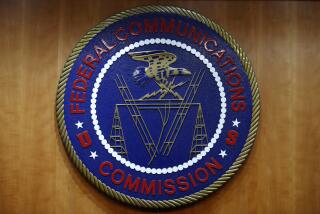Senators Weigh Rules on Phone Caller ID : Communications: Marketers stress its deterrent effect on obscene or harassing calls. Critics see it as a threat to privacy.
WASHINGTON — The Senate on Wednesday plunged into the growing controversy over caller ID, the new technology that permits a telephone customer to see the number of the person calling even before picking up the phone.
The service, which soon will be introduced in Los Angeles and San Francisco, has raised new and complex privacy issues.
Telephone companies have marketed the service by stressing its deterrent effect on obscene or harassing telephone calls. In one common advertisement, a woman is able to frighten an obscene caller by telling him that she knows his telephone number.
But in testimony Wednesday before the Senate Judiciary’s subcommittee on technology and the law, proponents of federal legislation to regulate caller ID say that the issues go beyond managing telephone obscenity.
In opening the session, subcommittee Chairman Patrick J. Leahy (D-Vt.) asked if caller ID would “jeopardize the safety of desperate people seeking refuge from domestic violence, or inhibit the drug addict or suicidal teen-ager from seeking help.”
The issues often involve balancing the rights of callers against those of recipients.
“The competing privacy interests are most often held by the same people,” said Janlori Goldman, legislative counsel for the American Civil Liberties Union in Washington. “In fact, when they see themselves as receivers of phone calls, most people are eager for caller ID. But, as makers of phone calls, most people want the power to block the display of their numbers.”
Caller ID is currently offered in New Jersey, Maryland, Virginia and West Virginia. But earlier this year a judge in Pennsylvania blocked introduction of the service there, saying that caller ID is unconstitutional under state laws that ban wiretapping.
Pacific Bell plans to introduce caller ID in California next year, along with other services using the same technology.
The federal legislation under consideration by the Senate would permit introduction of caller ID only if telephone customers are also given the option of blocking the display of their number. Customers who wished to make a call without releasing their phone number could dial a code and the recipient would only see “P” or “Private” on the caller ID display screen.
In addition to this type of “per-call” blocking, telephone companies also have the ability to permanently block the display of a customer’s telephone line every time they make a call. This is usually referred to as “per-line” blocking.
Telephone companies are divided over the issue. When Pacific Bell begins caller ID service, the company also will offer “per-call” blocking to all telephone customers without charge. John Stangland, Pacific Bell’s assistant vice president for product development and management, said that the company decided that offering caller ID and blocking at the same time “is the most balanced alternative for our customers.”
More to Read
Get the L.A. Times Politics newsletter
Deeply reported insights into legislation, politics and policy from Sacramento, Washington and beyond. In your inbox three times per week.
You may occasionally receive promotional content from the Los Angeles Times.










